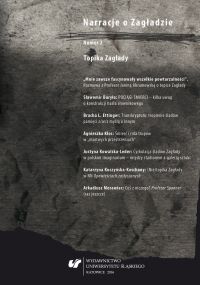

 https://doi.org/10.31261/NoZ.2016.02.08
https://doi.org/10.31261/NoZ.2016.02.08
The Topos of Poland as the Jewish Cemetery in Hebrew Literature of the Third Generation
The aim of this paper is to enumerate and describe possible strategies of realising the topos of Poland as the Jewish cemetery, present and significant in Hebrew literature and other Israeli texts of culture. Hebrew literature – along with Polish literature – is the main and natural reservoir of the Holocaust‑related topoi. Simultaneously, it presents a perspective distinct from the one visible in Polish literature and contains motifs absent in Polish authors’ works. Chosen examples point to the constant presence of the vision of Poland as a Jewish cemetery in the texts referring to the experience of the Shoah and the memory of it, while showing the multitude of applications of this motif. Popularity of the usage of the mentioned topos is emphasised by the demonstration of its presence within texts of a different generic origin – from poetry, through graphic novel and drama, to literary attempts of the participants of school pilgrimages to the memory places in Poland.
Key words: Poland as a Jewish necropolis, Hebrew literature, Holocaust in Israeli discourse, postmemory
Pobierz pliki
Zasady cytowania

Nr 2 (2016)
Opublikowane: 2016-12-31